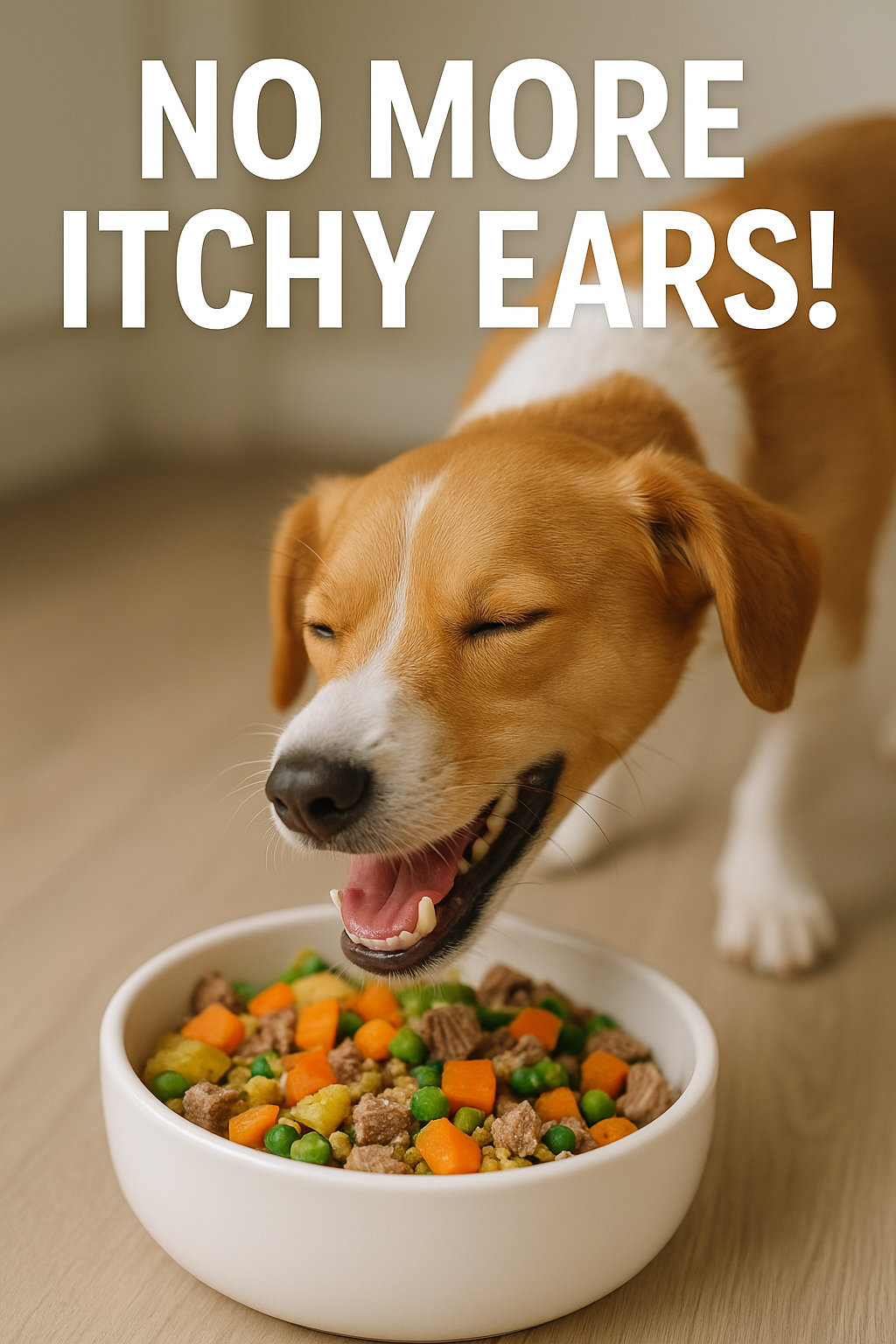
Introduction: Is Your Dog’s Food Fueling Their Ear Infections?
If your dog suffers from frequent ear infections—scratching, head shaking, yeasty smells—you’re not alone. Otitis externa, or inflammation of the outer ear canal, is one of the most common reasons for vet visits. While environmental allergens and moisture often get the blame, what you’re feeding your dog could be a major contributor.
This article explores how specific ingredients in commercial dog food may be the root cause of chronic ear issues—and what you can do about it.
The Food–Ear Infection Connection
Dogs prone to food sensitivities often exhibit symptoms in their skin and ears first. Here’s how it works:
- Food sensitivities → inflammation in skin and ear canals
- Inflammation → excess wax, poor drainage
- Warm, moist environment → perfect breeding ground for yeast and bacteria
Over time, recurring ear infections can signal an underlying food issue, not just bad luck or dirty ears.
Top Dog Food Ingredients That May Cause Ear Infections
🥩 1.
Beef
Beef is one of the most common protein allergens in dogs. While high in iron and protein, dogs exposed to beef early and often may develop sensitivities. Symptoms include itchy ears, red skin, and chronic yeast overgrowth.
🐔 2.
Chicken
Surprised? Chicken is the most common protein in commercial dog foods, and overexposure can trigger immune responses in some dogs. Chicken fat is less likely to cause issues, but chicken meal or chicken by-product can be problematic.
🌾 3.
Wheat and Corn
While not inherently harmful, wheat and corn are common allergens and can trigger inflammatory responses in some dogs. They also tend to fuel yeast, especially if your dog is already prone to it.
🧀 4.
Dairy Products
Cheese or lactose-containing treats may seem like harmless rewards, but dairy is a known trigger for food-related allergic reactions in dogs, particularly in breeds like French Bulldogs and Cocker Spaniels.
🍗 5.
By-Products and Fillers
Ingredients like meat by-products, artificial preservatives (BHA, BHT), and flavor enhancers can exacerbate inflammation and contribute to allergic responses—often showing up in the ears first.
Common Signs of Food-Triggered Ear Infections
- Recurring yeast infections (brown discharge, odor)
- Chronic scratching or head shaking
- Red, inflamed ears
- Hair loss around the ears
- Resistance to treatment (antibiotics or antifungals only work temporarily)
Breeds at Higher Risk
Some breeds are genetically more prone to both food allergies and ear infections:
- Cocker Spaniels
- French Bulldogs
- Golden Retrievers
- Labradors
- Poodles
- Basset Hounds
These breeds benefit the most from an elimination diet or limited-ingredient foods.
What To Feed Instead: Anti-Allergy Dog Food Tips
✅ Single-Protein Diets – Try novel proteins like duck, venison, rabbit, or fish.
✅ Grain-Free (With Caution) – Some dogs benefit from grain-free diets, but check for legumes and potatoes, which can also cause reactions in rare cases.
✅ Limited Ingredient Diets (LID) – Fewer ingredients = fewer allergens.
✅ Hydrolyzed Protein Diets – These prescription foods use proteins broken down so small the immune system doesn’t react to them.
✅ Homemade Diets (Vet-Supervised) – Allow total control over ingredients.
Sample Brands to Explore
| Brand | Key Feature |
|---|---|
| Zignature | Exotic proteins, no chicken or potatoes |
| Natural Balance LID | Limited ingredients, single protein |
| JustFoodForDogs | Human-grade, custom allergy recipes |
| Hill’s Prescription z/d | Hydrolyzed protein for extreme cases |
| Open Farm | Humanely raised meat, no by-products |
Always transition gradually over 7–10 days to avoid digestive upset.
What Not To Do
🚫 Don’t self-diagnose without a vet’s input
🚫 Don’t assume that grain-free = allergy-free
🚫 Don’t switch foods too frequently—it makes identifying triggers harder
What to Ask Your Vet
- “Can we try an elimination diet?”
- “Would a food trial help determine if allergies are the cause?”
- “Is this a yeast infection or bacterial?”
- “Could a prescription diet help my dog?”
Final Thoughts: Healing Starts in the Bowl
If your dog’s ear infections keep coming back, look at their diet—not just their ears. Many pet parents see dramatic improvements in ear health after removing allergens from their dog’s food. It’s not always easy to pinpoint the culprit, but with persistence, a healthy, itch-free life is possible.